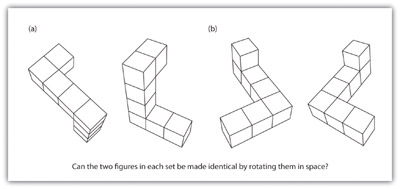You know how it is.
You sit down at your desk, survey your email, think about your to-do list, and feel the dull ache of despair.
How to get started? How to tackle this mountain of work? Some tasks are difficult to start because they’re too amorphous and undefined, others are too boring and others are too big and scary.
And all of this is happening against a background fog of sleep deprivation and the usual everyday anxieties.
Fight back with psychology! Here are six tips based on psychological research that can improve your state of mind and help you do what needs to be done…
1. Use your body
Are you sitting hunched over your desk in an attitude of despair? Remember that your body feeds back to your mind.
If your work needs persistence then cross your arms. If you need power then adopt a power pose with your body open, taking up as much space as possible.
There are many more links that psychologists have found between bodily position and effects on cognition. Have a look through these two lists: one, two. Use those that correspond to the mental state you need.
2. Mental contrast
Say there are three different tasks you could work on, how do you decide where to start?
You can work out what needs doing—and even what’s possible—by running a quick mental contrast.
Full instructions on mental contrasting are here, but briefly it means doing a fast list of pros and cons: you imagine a positive vision of the task finished, then think about the barriers you’ll face, then, crucially, contrast the two together. Without the contrasting this exercise doesn’t work.
After that, research suggests, you’ll either give up on the task, pass it off, decide to do it later…or, if it’s practical, your commitment and energy to complete it will be enhanced.
Mental contrasting can be done quickly and efficiently to get you on your way through that to-do list.
3. Adjust expectations
With task list at hand and body in the right position, it’s time to further adjust the posture of your mind.
If you’re having trouble getting going, then try to overestimate how easy the task will be to complete. A couple of important points though:
- Don’t dwell on the obstacles: there will always be obstacles and they will just put you off in the early stages.
- Don’t fantasise about completing it, psychologically that can be dangerous (see: why expectations beat fantasies).
Instead, briefly think about why the tasks facing you will be easier than you think and how they’ll go smoothly. A sort of positive insouciance is the right expectation to adopt.
4. Creative distance
Many tasks that aren’t necessarily labelled ‘creative’ still require considerable creativity. You may not be painting the Sistine Chapel, but generating new ideas will often make your job easier.
So, use a couple of tips from the psychology of creativity to give you the edge.
One fantastic way of generating new ideas or innovative ways of tackling a problem is by using psychological distance.
Do this by imagining your problem as distant and disconnected from your current location. Also, try projecting yourself forward in time, imagining how it will feel when you look back on it from next month or next year. Promoting psychological distance has been consistently shown to increase creative thinking.
Here are more research-based tips for boosting creativity.
5. Visualise process not outcome
The mind’s eye is powerful. So, like elite performers in sport, music and elsewhere, use the mind’s eye to power yourself forward.
In your mind, see yourself going through the procedures you need to complete the task.
Research on visualisation shows that when tasks are at the start or part-way through, it’s best to stay focused on the process and forget about the outcome.
But, when you are approaching the end, it boosts your motivation to shift your focus to the outcome.
So, in your mind’s eye, stay process focused at the start of a project or day, then switch through to a goal focus as the end comes in sight.
6. The Zeigarnik effect
For those still staring hopelessly at their to-do lists, here’s one last tip: start with something straightforward or low-priority to get the ball rolling.
If you can just get under way with any part of a project, then the rest will tend to follow. Once you’ve made a start, however trivial, you’ll be more powerfully drawn on to the end.
This trick relies on what psychologists call ‘the Zeigarnik effect‘. Check out the article for the full explanation, but essentially it means that we dislike leaving things unfinished that we’ve started.
Take advantage of the mind’s obsession with tying up loose ends by creating a few loose ends of your own.
Image credit: Justyna

